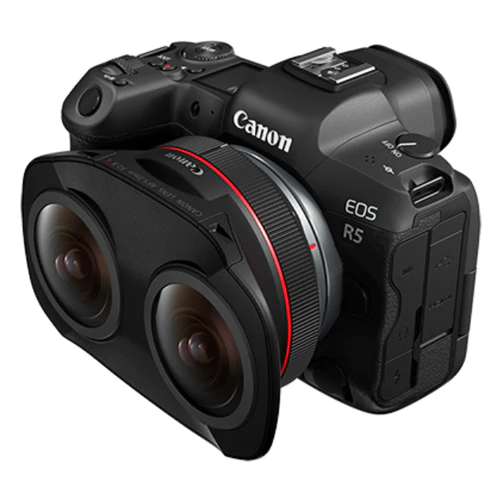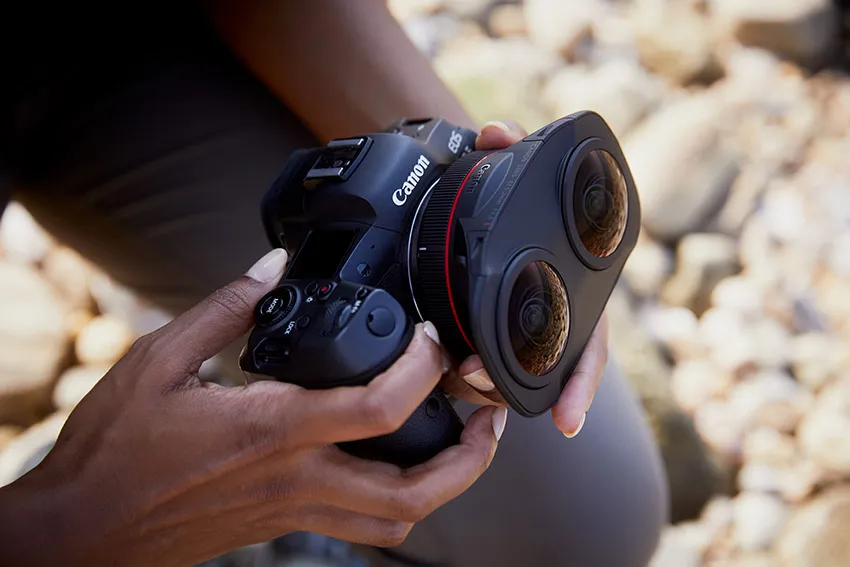Views : 119





3Dprinting (179) A.I. (900) animation (353) blender (217) colour (241) commercials (53) composition (154) cool (368) design (657) Featured (91) hardware (317) IOS (109) jokes (140) lighting (300) modeling (156) music (189) photogrammetry (197) photography (757) production (1308) python (101) quotes (498) reference (317) software (1379) trailers (308) ves (573) VR (221)
POPULAR SEARCHES unreal | pipeline | virtual production | free | learn | photoshop | 360 | macro | google | nvidia | resolution | open source | hdri | real-time | photography basics | nuke
Category: hardware
-
Best 3D Printers of 2023! A Guide for Beginners, Budgets, & More!
~Low Budget~
- Elegoo Neptune 3 – $189 – https://www.elegoo.com/en-ca/collections/3d-printers/products/elegoo-neptune-3-pro-fdm-3d-printer-225x225x280mm
- Elegoo Neptune 4 -$239 – https://www.elegoo.com/collections/3d-printers/products/elegoo-neptune-4-fdm-3d-printer
- Bambu Lab A1 Mini – $299 – https://ca.store.bambulab.com/products/a1-mini
- Bambu Lab A1 Combo – $459 – https://ca.store.bambulab.com/products/a1?_pos=2&_sid=e97d0d489
- Creality K1 – $479 – https://store.creality.com/products/k1-3d-printer
~Medium Budget~
- Bambu Lab P1P – $539 – https://ca.store.bambulab.com/products/p1p?sscid=c1k7_l2ppk
- Bambu Lab P1S – $599 – https://ca.store.bambulab.com/products/p1s?variant=41211805696136
- Flashforge 5M Pro – $599 – https://www.flashforgeshop.com/product/adventurer-5m-pro-3d-printer
- Elegoo Neptune 3 PLUS – $279 – https://www.elegoo.com/collections/3d-printers/products/elegoo-neptune-3-plus-fdm-3d-printer-with-larger-build-volume-of-320x320x400mm
- Elegoo Neptune 4 PLUS – $350 – https://www.elegoo.com/collections/3d-printers/products/neptune-4-plus-fdm-3d-printer
~High Budget~
- Creality K1 MAX – $719 – https://store.creality.com/products/k1-max-3d-printer
- Prusa Mk4 (Kit) – $799 – https://www.prusa3d.com/product/original-prusa-mk4-kit-2/
- Prusa Mk4 (Built) – $1099 – https://www.prusa3d.com/product/original-prusa-mk4-2/
- FLsun V400 – $649 – https://store.flsun3d.com/products/flsun-v400
- Bambu Lab X1C – $1049 – https://ca.store.bambulab.com/products/x1-carbon-3d-printer
- Bambu Lab X1C AMS – $1299 – https://ca.store.bambulab.com/products/x1-carbon-combo
~Experienced User~
- Bambu Lab X1C – $1049 – https://ca.store.bambulab.com/products/x1-carbon-3d-printer
- Bambu Lab X1C AMS – $1299 – https://ca.store.bambulab.com/products/x1-carbon-combo
- Bambu Lab P1P – $539 – https://ca.store.bambulab.com/products/p1p
- Bambu Lab P1S – $599 – https://ca.store.bambulab.com/products/p1s
- Creality K1 MAX – $719 – https://store.creality.com/products/k1-max-3d-printer
- Prusa Mk4 (Kit) – $799 – https://www.prusa3d.com/product/original-prusa-mk4-kit-2/
- Prusa Mk4 (Built) – $1099 – https://www.prusa3d.com/product/original-prusa-mk4-2
- Elegoo Neptune 3 MAX – $380 – https://www.elegoo.com/collections/3d-printers/products/elegoo-neptune-3-max-fdm-3d-printer-massive-printing-size-of-420x420x500mm
- Prusa XL – $1999 – https://www.prusa3d.com/product/original-prusa-xl-2/
-
FDM vs Resin 3D Printing – Which is Better?
https://www.miniwargaming.com/content/matthews-3d-printing-recommendations
<strong>NOTE: Resin printing is known to suffer from bending or warping, so it is not suggested for structural or modular pieces</strong>
FDM: Bambu Lab P1S 3D Printer
-
Elegoo Saturn 3 Ultra Review – ACF Resin 3D printer
NOTE: You can use Anycubic water washable 8k resin with this printer.
What is ACF film (Advanced Composite Film) for resin printing?
The ACF Film features a bottom, frosted layer film that creates a softer and less suction force during printing. This remarkable attribute significantly enhances the success rate when printing challenging resins with high viscosity, ensuring exceptional results.
https://www.elegoo.com/en-ca/products/elegoo-saturn-3-ultra-resin-3d-printer-12k
Washing and curing
-
Canon RF 5.2mm f2.8L Dual Fisheye EOS VR System for VR photography and editing


As part of the EOS VR System – this lens paired with the EOS R5 updated with firmware 1.5.0 or higher and one of Canon’s VR software solutions – you can create immersive 3D that can be experienced when viewed on compatible head mount displays including the Oculus Quest 2 and more. Viewers will be able to take in the scene with a vivid, wide field of view by simply moving their head. This is the world’s first digital interchangeable lens that can capture stereoscopic 3D 180° VR imagery to a single image sensor.
The pairing of this lens and the EOS R5 camera brings high resolution video recording at up to 8K DCI 30p and 4K DCI 60p.
(more…) -
Using a $50 Schneider Enlarging lens for negatives scanning for macro photography
https://www.closeuphotography.com/50-dollar-componon-vs-mitutoyo-objective
What if you could find a lens for less than $100 that could produce image quality as good as a microscope objective
-
LasVegas’ Sphere and the Big Sky Camera
https://theasc.com/articles/sphere-and-the-big-sky-camera
Sphere is a 516′-wide, 366′-tall geodesic dome that houses the world’s highest-resolution screen: a 160,000-square-foot LED wraparound that fills the peripheral vision for 17,600 spectators (20,000 if standing-room areas are included). The curved screen is a 9mm-pixel-pitch, sonically transparent surface of LED panels with 500-nit brightness that produce a high-dynamic-range experience. The audience sits 160′ to 400′ from the screen in theatrical seating, and the screen provides a 155-degree diagonal field of view and a more-than-140-degree vertical field of view.
The image on the screen is 16K (16,384×16,384) driven by 25 synchronized 4K video servers.
https://nofilmschool.com/darren-aronofsky-sphere-camera
Cross section:
-
Magic Lantern – a free software add-on to boost Canon’s features
https://builds.magiclantern.fm/
Supported cameras:
5D Mark II, 5D Mark III, 6D, 7D, 50D, 60D, 500D/T1i, 550D/T2i, 600D/T3i, 650D/T4i, 700D/T5i, 1100D/T3, EOS M.Example features:
- Zebras for under/over exposed areas.
- Focus peaking for quickly checking focus.
- Magic Zoom window to fine-tune focus.
- Cropmark overlays for 16×9 bars or any custom shape.
- Overlay a ghost image in live view.
- Spotmeter in live view.
- False color for precise exposure control.
- RGB histogram with RAW support.
- Waveform for perfect green screen lighting.
- Vectorscope for color tones.
- Kelvin and push-button white balance.
- Auto ETTR (Expose To The Right).
- Exposure Lock for manual mode.
- Manually override exposure settings in LiveView.
- Quickly switch between two exposure presets.
- Toggle exposure simulation on/off (Liveview).
- Dynamic range improvements (Dual ISO, other features being researched).
- Bracketing for exposure, flash, or depth-of-field.
- In-camera intervalometer.
- Custom bulb timer for extra-long exposures.
- Motion detection.
- Silent pictures without shutter actuation.
- Record voice tags for photos / videos.
- Analog / digital gain adjustments.
- Selectable input source.
- Toggle wind filter.
- Live audio monitoring through with headphones.
- Beep / test tones.
-
Creality K1 Max Review – Large High Speed 3D Printer
- 300mm x 300mm x 300mm Build Volume
- Compatible Printing Materials Up to 300°C
- Quality of Life Features Like Hands-Free Auto Bed Leveling
- High-Speed CoreXY with 20000 mm/s² Acceleration
- Sturdy Unibody Die-cast Frame
- Assembled & Calibrated Out of the Box
- Max Print Speed: 600mm/s
- Average Print Speed: 300mm/s
- Print Acceleration: 20,000mm/s2
- 32mm³/s Max Flow Hotend
- G-sensor compensates for ringing
- Unibody die-cast frame adds stability
- Reduced Z-banding with upgraded Z-axis
- 0.6mm and 0.8mm sizes (compatible)
- Nozzle Diameter 0.4mm (included)
- Material Types: PLA, ABS, PETG, PET, TPU, PA, ABS, ASA, PC,
PLA-CF*, PA-CF*, PET-CF*
-
Meta Quest 3 is here
https://www.roadtovr.com/meta-quest-3-oculus-preview-connect-2023/
- Better lenses
- Better resolution
- Better processor
- Better audio
- Better passthrough
- Better controllers
- Better form-factor
-
Laowa 25mm f/2.8 2.5-5X Ultra Macro vs 100mm f/2.8 2x lens
https://gilwizen.com/laowa-25mm-ultra-macro-lens-review/
https://www.cameralabs.com/laowa-25mm-f2-8-2-5-5x-ultra-macro-review/
- Pros:
– Lightweight, small size for a high-magnification macro lens
– Highest magnification lens available for non-Canon users
– Excellent sharpness and image quality
– Consistent working distance
– Narrow lens barrel makes it easy to find and track subject
– Affordable
- Cons:
– Manual, no auto aperture control
– No filter thread (but still customizable with caution)
– Dark viewfinder when closing aperture makes focusing difficult in poor light conditions
– Magnification range is short 2.5-5x compared to the competition
Combining a Laowa 25mm 2.5x lens with a Kenko 12mm extension tube
To find the combined magnification when using a Laowa 25mm 2.5x lens with a 12mm Kenko extension tube, given the magnification of the lens itself, the extension tube length, and the combined setup, you can calculate the total magnification.
First, consider the magnification of the lens itself, which is 2.5x.
Then, to find the total magnification when the extension tube is attached, you can use the formula:
Total Magnification = Magnification of the Lens + (Magnification of the Lens * Extension Tube Length / Focal Length of the Lens)
In this case, the extension tube length is 12mm, and the focal length of the lens is 25mm. Using the values:
Total Magnification with 2.5x = 2.5 + (2.5 * 12 / 25) = 2.5 + (30 / 25) = 2.5 + 1.2 = 3.7x
Total Magnification with 5x = 5 + (5 * 12 / 25) = 5 + (60 / 25) = 5 + 2.4 = 7.4x
- Pros:
-
Macro Probe Lens Comparison: AstrHori 28mm vs Laowa 24mm
https://visualeducation.com/macro-probe-lens-comparison-astrhori-28mm-vs-laowa-24mm/
https://petapixel.com/2022/11/01/astrhori-has-a-28mm-macro-probe-lens-that-looks-a-lot-like-laowas/
Overall, the Laowa did perform better than the AstrHori across all of our tests. The AstrHori lost contrast and suffered from flare when the subject was backlit. It also struggled to achieve perfect neutrality in terms of colour balance.
However, as mentioned above, the cost difference between these two lenses is significant. Considering that it costs less than half as much as the Laowa, the AstrHori is an impressive macro probe lens for the price.
COLLECTIONS
| Featured AI
| Design And Composition
| Explore posts
POPULAR SEARCHES
unreal | pipeline | virtual production | free | learn | photoshop | 360 | macro | google | nvidia | resolution | open source | hdri | real-time | photography basics | nuke
FEATURED POSTS
-
3D Gaussian Splatting step by step beginner course
-
Image rendering bit depth
-
HDRI Median Cut plugin
-
Ethan Roffler interviews CG Supervisor Daniele Tosti
-
Free fonts
-
Kling 1.6 and competitors – advanced tests and comparisons
-
Zibra.AI – Real-Time Volumetric Effects in Virtual Production. Now free for Indies!
-
Matt Gray – How to generate a profitable business
Social Links
DISCLAIMER – Links and images on this website may be protected by the respective owners’ copyright. All data submitted by users through this site shall be treated as freely available to share.
